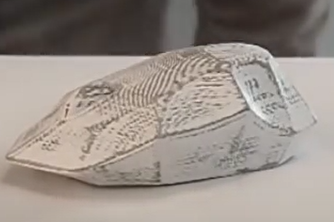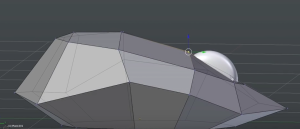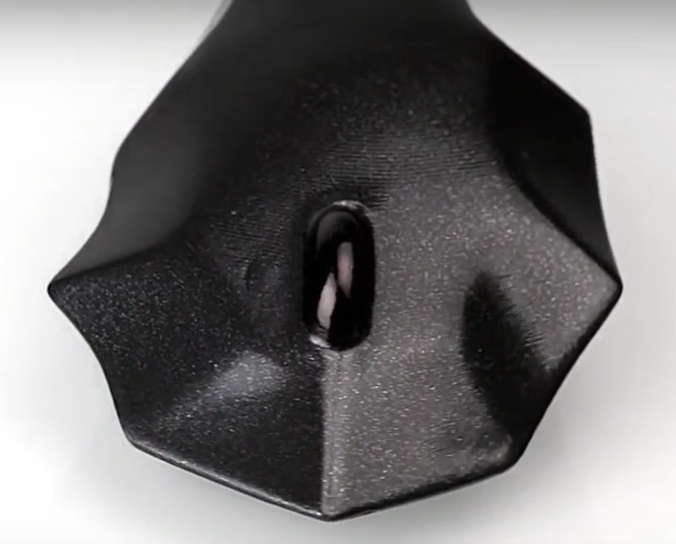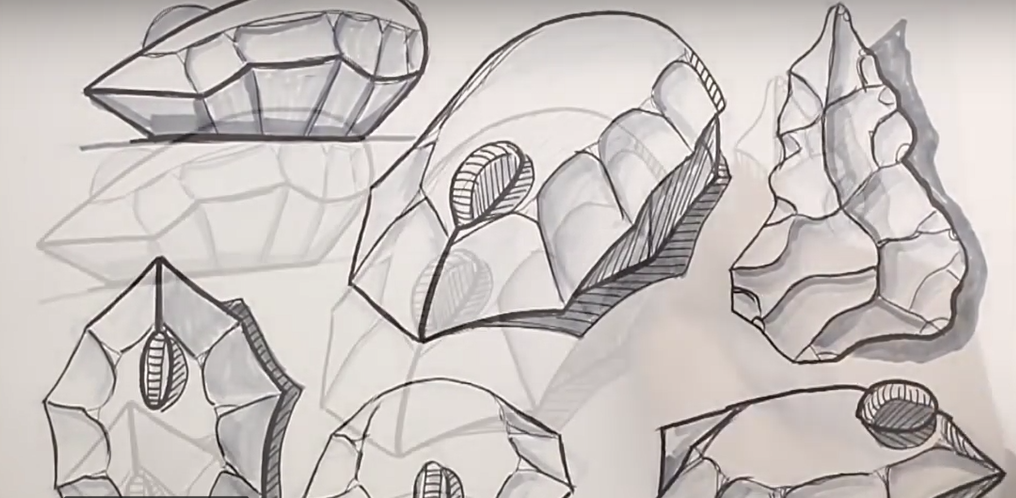 Have you ever wondered how a 3D printed object moves through the process from simple concept to end result? Each object, depending on factors such as material, size, finishing, and color, will be different, so it’s important to show all of the steps involved in the making of a 3D printed object. Why? This is to help people truly grasp what is involved when we make a 3D printed item. It’s not just about the cool machines that print things. It’s also about moving from concept to drawing, modeling, printing, and all activities associated with post-printing: dusting, priming, sanding, and painting.
Have you ever wondered how a 3D printed object moves through the process from simple concept to end result? Each object, depending on factors such as material, size, finishing, and color, will be different, so it’s important to show all of the steps involved in the making of a 3D printed object. Why? This is to help people truly grasp what is involved when we make a 3D printed item. It’s not just about the cool machines that print things. It’s also about moving from concept to drawing, modeling, printing, and all activities associated with post-printing: dusting, priming, sanding, and painting.
In that spirit, Guido Vrola Design has produced a remarkable video that shows all of the steps involved in the making of a Stone Age-inspired computer mouse. In the video, you can see all the steps involved and hopefully get an overall idea of what it takes to make something 3D printed, and this may make you want to try making your own Stone Age-inspired 3D printed mouse.
A reference to the Stone Age simply can not be passed up, it seems, without also referring to the American cartoon The Flintstones. In the cartoon we confront how modern amenities — most memorable for me is the automobile — are “Stone Age-ified.” That is, the modern becomes distinctively near ancient, and what better way to capture this than a computer-related accessory like a mouse?
 As Guido Vrola sets out to bring this idea from concept to end product, we are able to view a fast version on this process. Vrola explains the overall movement of the video, and how Blender modeling software is central to his creative process:
As Guido Vrola sets out to bring this idea from concept to end product, we are able to view a fast version on this process. Vrola explains the overall movement of the video, and how Blender modeling software is central to his creative process:
“In this video, I share the process I use to create a design project from the realization of concept sketches moving then to digital modeling and to the construction of a physical prototype through 3D printing. I used Blender to model the mouse because I find that, when I have to translate ideas into 3D models to print them and test the ergonomy (and maybe change them multiple times), Blender is the fastest and easiest way of doing it.”
First we have the drawing of the object, and the next step shows how the drawing becomes a model using Blender. Next, we see him 3D printing and then wiping down the mouse, and then using Dupli-Color Plastic Primer on it.
 Following the primer, Dupli-Color Repair Spray is then used. After the Repair Spray dries, 600 grit sandpaper helps distress the mouse, giving it a Stone Age look. As far as I am concerned, it could stop here because the mouse really looks like a rough and tumble tool. But Vrola decides to take this all the way and finish the job instead with a coat of slick and glossy black spray paint.
Following the primer, Dupli-Color Repair Spray is then used. After the Repair Spray dries, 600 grit sandpaper helps distress the mouse, giving it a Stone Age look. As far as I am concerned, it could stop here because the mouse really looks like a rough and tumble tool. But Vrola decides to take this all the way and finish the job instead with a coat of slick and glossy black spray paint.
The finished product still looks very Stone Age, and who says they didn’t have anything slick back then anyway?
You can check out Guido Vrola Design’s excellent YouTube video below. Is this a product you would enjoy using? Discuss in the 3D Printed Mouse forum over at 3DPB.com.
Subscribe to Our Email Newsletter
Stay up-to-date on all the latest news from the 3D printing industry and receive information and offers from third party vendors.
You May Also Like
Polls of the Week: Are 3D Printed Guns a Threat and Should We Regulate Them?
One of the most controversial topics in the 3D printing industry, hands-down, is guns. It’s been a major point of contention for years, and people typically have very strong opinions...
3D Printing News Briefs, April 3, 2024: Kickstarter FDM 3D Printer, Artificial Eyes, & More
In 3D Printing News Briefs today, we’re talking about an FDM 3D printer on Kickstarter, advancements in artificial eye creation, and 3D printed solenoids for electromagnets. Then we’ll move on...
Daring AM: The Global Crackdown on 3D Printed Firearms Continues
In the last few years, a surge in police raids uncovering 3D printed guns has led to concerns about their growing association with criminal gangs. Although typically seen as inferior...
Daring AM: Canada Tackles Increase of 3D Printed Gun Arrests and Sentences
Recent incidents in Canada have brought to light the arrest of individuals for possessing illegal 3D printed firearms, among other charges. These incidents, which resulted in multiple arrests, serve as...






























